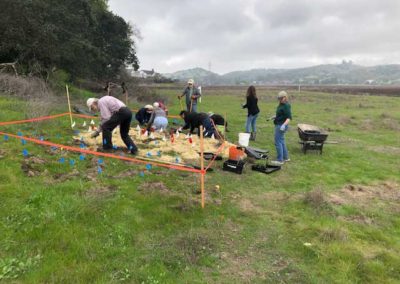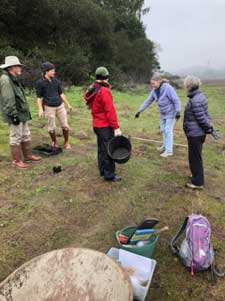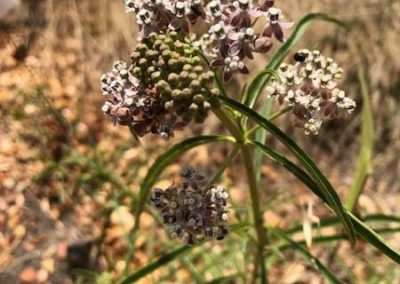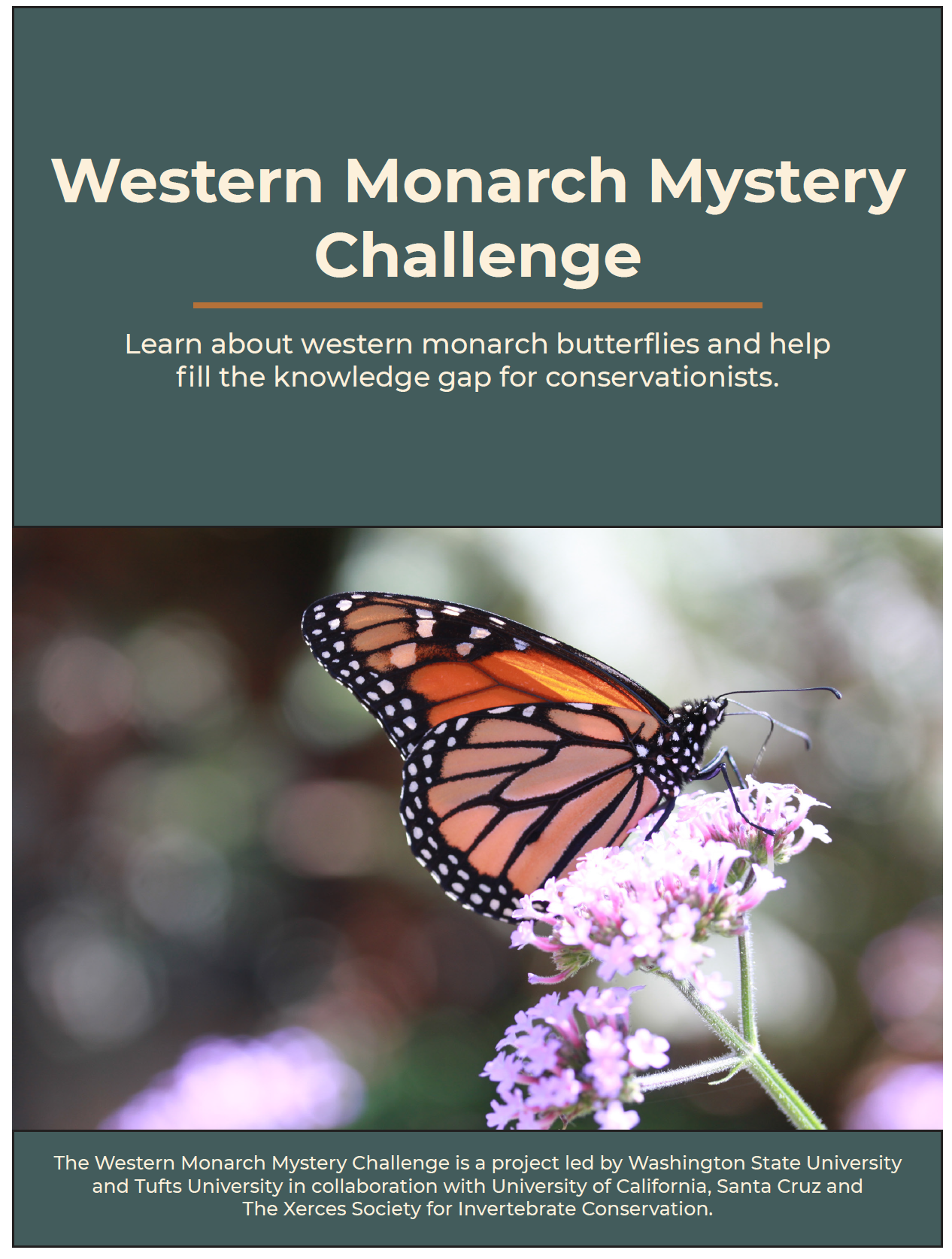
Monarchs Are Still In Serious Trouble
This year’s 2020 Thanksgiving and New Year’s annual count observed less than 2,000 overwintering monarchs in coastal California. This is a 99.9% decline since the 1980s. These count results follow two years with fewer than 30,000 butterflies – record lows – indicating the western monarch population is nearing collapse. Pacific Grove, which goes by the name “Butterfly Town USA” because of the many monarchs overwintering in cypress the city’s trees, had no monarchs at all this year.
Interestingly, with the unseasonably warm weather well into January monarchs have been observed around the bay and did not make it to their traditional overwintering sites on the coast where it is warmer. Hopefully these butterflies will survive the winter and join the spring migration inland. However, if we get some cold storms these lingering monarchs could be wiped out.
This sad news comes on top of the announcement by the US Fish and Wildlife Service that monarch butterflies are “warranted but precluded” from listing under the Endangered Species Act. This Federal decision comes on the heels of a court decision in California that terrestrial invertebrates including monarchs and bees cannot be offered protection under the California Endangered Species Act. Endangered species designation would usher in resources and funding to help the species to recover. Marin Audubon and others will be contacting legislators to encourage the regulators to list the monarch as endangered.
Despite these legal and regulatory setbacks there are things we urgently need to do to save this magnificent butterfly. It will be important to establish monarch “waystations” of nectar plants and milkweed. If you have a garden please consider planting native nectar plants and if you live away from the immediate coast also plant native milkweed, which is the host plant for the monarch larvae. A list of native nectar plants and milkweed can be found at the bottom of this page. Over the last two years Marin Audubon volunteers have been establishing stands of nectar plants and milkweed on two of our properties.
The Monarch Rescue Project
In January 2019 eight volunteers braved a cold foggy morning at the Marin Audubon’s Simmons property in Novato to kick off The Monarch Rescue Project. This is a joint project of the Marin Audubon Society (MAS) and the Marin Chapter of the California Native Plant Society (MCNPS) https://www.cnpsmarin.org in an effort to provide much needed host plants and flowering plants for the Monarch butterfly as well as for other pollinating insects.
Butterfly counts conducted by the Xerces Society for Invertebrate Conservation found dismally low populations of the Monarch butterfly throughout California https://xerces.org/monarchs/western-monarch-conservation. In recent years monarchs migrating to California have declined by more than 99%.
Monarchs require milkweed, a herbaceous plant that grows throughout the United States and Mexico, for breeding and migration. Milkweed contains a cardiac glycoside that is toxic to many animals, including dogs, livestock and even goats. The Monarch larvae and adults are also toxic to many predators. The acreage of milkweed has been declining in recent years because of pesticide use and urban development. In order to reverse this precipitous decline of Monarch butterflies it is essential that the availability of milkweed be expanded throughout the US as well as in Marin.
For the MAS Monarch Rescue Project the MCNPS together with Charlotte Torgovitsky’s Home Ground Habitats has generously donated seed and plant starts for Narrowleaf milkweed (Asclepias fascicularis) as well as various nectar plants including Goldenrod (Solidago velutina ssp californica) and Bay Area Gumplant (Grindelia stricta var. platyphylla). For many years MAS has been planting the latter two late blooming plant species on the properties it has been restoring, but this is the first time that Milkweed has been planted. For detailed information about the life cycle of Monarchs and other native butterflies see Charlotte’s website at www.homegroundhabitats.org.
Seed germination and plant survival at Simmons will be monitored and the plots will be mulched, weeded and watered as necessary through the spring and summer to establish the plants and see what works. As we gain experience with the survival conditions necessary for milkweed plantings the Monarch Rescue Project will be expanded to other MAS properties. In the winter of 2021 new milkweed and nectar plant drifts will be planted on a portion of the MAS’s Bahia property.
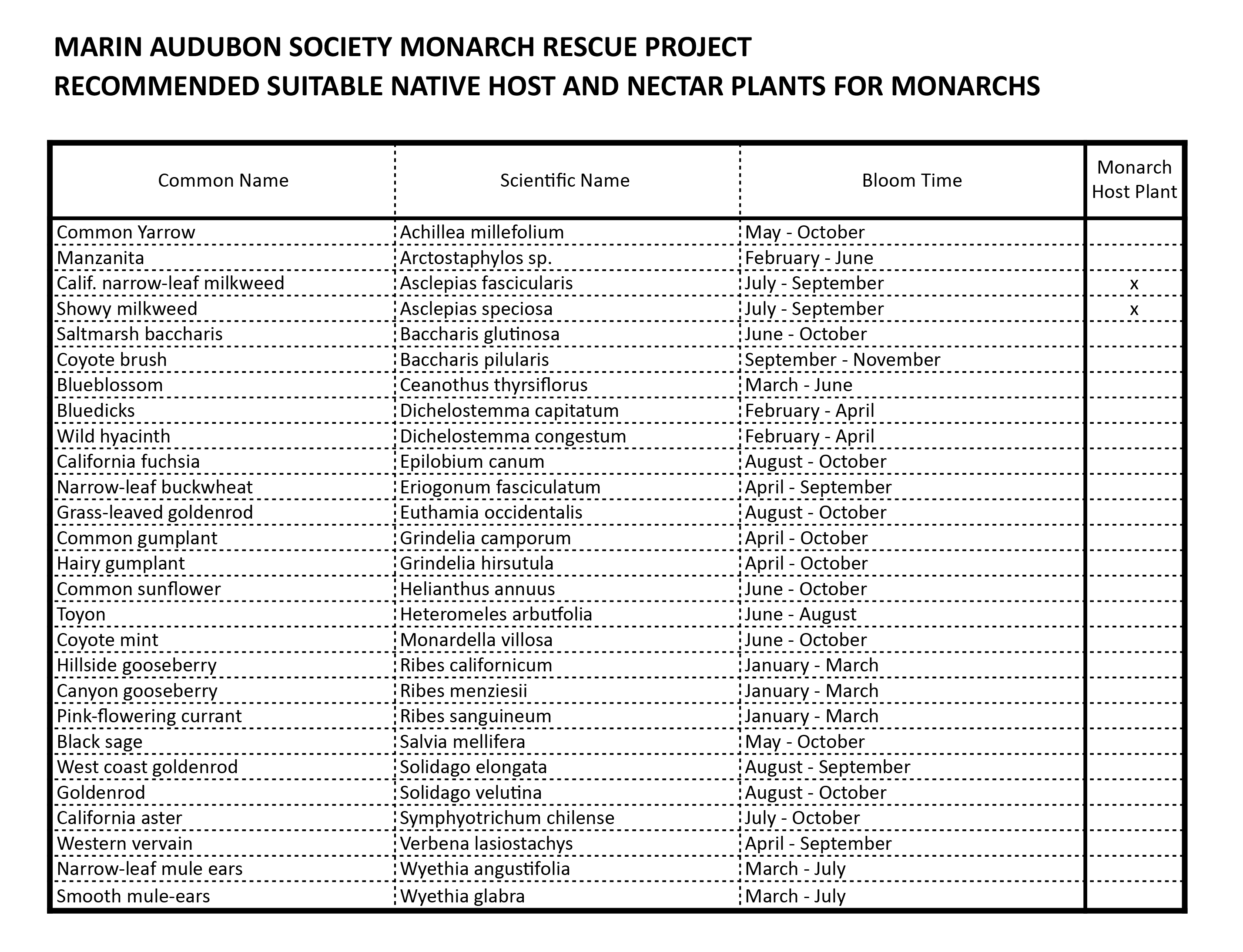
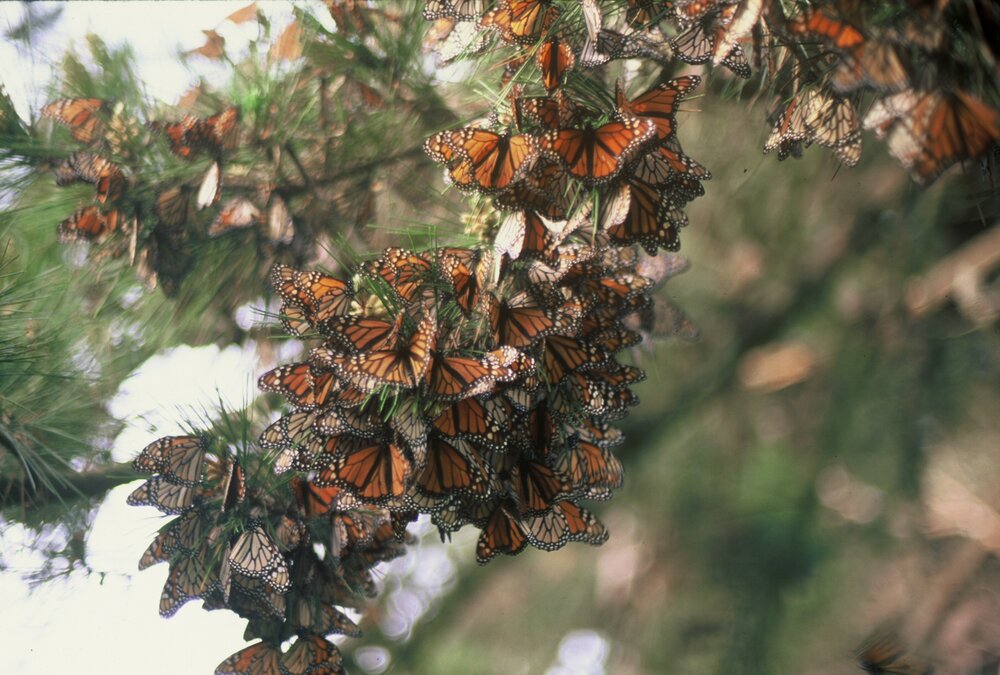
Find out more about Marin’s Monarch Movement
HERE
Please see the below links for additional information regarding the Western Monarch Counts and their continued decline:
Western Monarch Mystery Challenge
In light of the over 99% decline of the population of western monarchs you are invited to participate in the Western Monarch Mystery Challenge. The purpose of the challenge is to use community science to try to figure out where and how the monarchs migrate from their overwintering sites in coastal California to inland sites to the Central Valley, the Sierra foothills and beyond.
The challenge was started by a group of researchers from Washington State University, Tufts University, University of California at Santa Cruz and the Xerces Society to help fill a critical gap in knowledge about habitat needs of migrating monarchs in the spring. The challenge runs from Feb. 14 (Valentine’s Day) to April 22 (Earth Day) and is a call to action to report a monarch if you see one. Once you report a sighting, you will be entered to win prizes.
Solving the mystery of where wild, migratory western monarchs are at this time of year is a way for Californians to make a contribution to conserving and restoring the monarch migration in the West.
